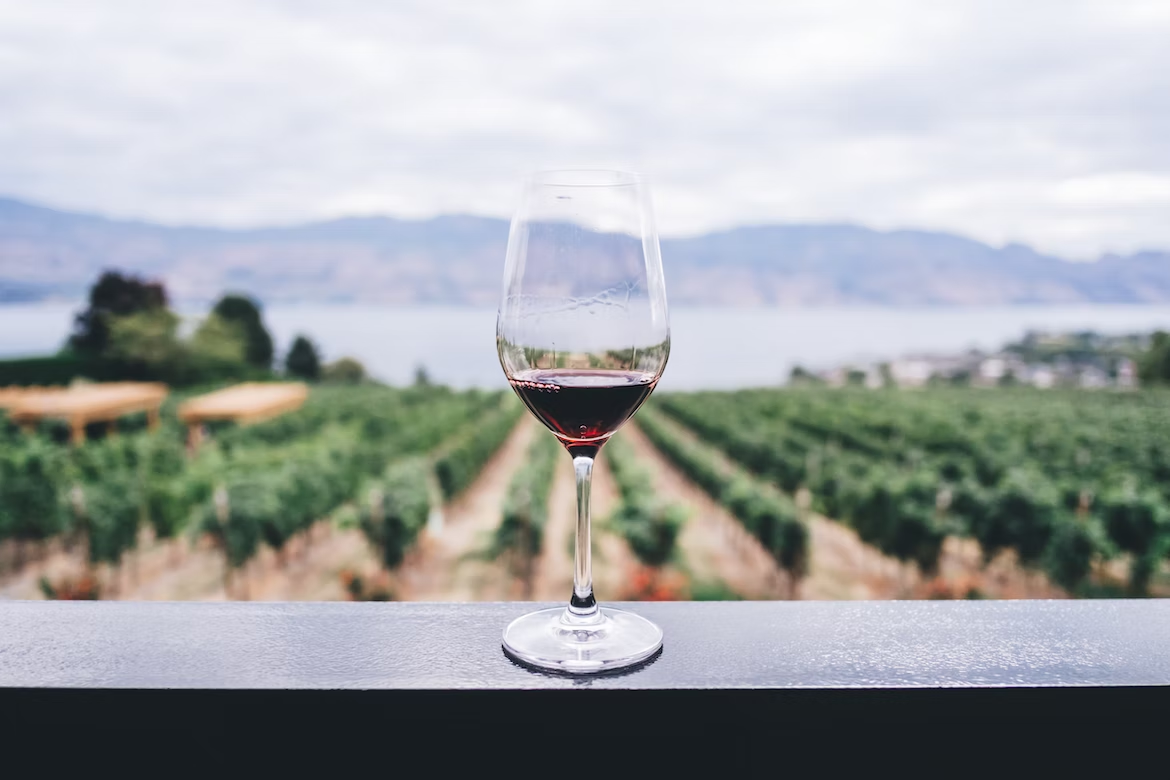To locals and visitors alike, wine is synonymous with Cyprus: from the old-world winemaking traditions, and home winemaking to the modern-day micro- and boutique wineries — this small country in the Eastern Mediterranean has cemented its reputation as a wine island.
With almost 200 vineyards dotting the landscape, Cyprus is an ideal location for growing grapes. The favorable climate, soil, and rainfall are conducive to grape-growing.
That's why it is no surprise that now more than ever, local and international interest in winemaking on the island is at an all-time high.
Curious about what makes Cyprus wine special? Here's everything you need to know about winemaking in Cyprus.
Table of Contents
Climate Peculiarities

Cyprus's Mediterranean climate is perfect for grape growing and winemaking:
- Winters are mild, with average temperatures hovering around the 50 F (10 C) mark.
- Summers are warm, with temperatures rarely exceeding the 86 F (30 C) mark.
- Rainfall is evenly distributed throughout the year, with a slight drop in the summer months.
- Cyprus's volcanic soil is rich in minerals and elements essential for grape growth.
- About 80% of the island is covered with limestone, which provides excellent drainage and is rich in iron.
History of Winemaking in Cyprus
The winemaking tradition in Cyprus is about 6,000 years old, evidenced by archaeological finds on the island.
An analysis of the contents of wine storage vessels dating back to the Neolithic and Chalcolithic periods suggests that the first wine in the Mediterranean was made in Cyprus.
The island's medieval history is directly connected with the famous Cypriot wine Commandaria.
The Most Popular Winemaking Companies
ETKO organized the first industrial winery in 1844. Then the KEO and SODAP companies were established, and in 1943 the LOEL company was created.
These companies, known as the “big four,” are engaged in the production of wine in Cyprus on a large industrial scale.
Cyprus wines under these brands are sold in supermarkets and online stores like https://puninwine.com/catalog/wine/filter/country-cyprus throughout the island and are also widely exported abroad.
Some wines are intended for sale only in small wineries in the wine regions of Cyprus. This is, as a rule, a family business that preserves and enhances the traditions of Cypriot winemaking.
In recent years, a significant number of small “boutique” wineries have begun to appear, such as the ones below.

Tsiakkas Wines
Pelendri village is where Tsiakkas winery, a new venture, was established in 1988. Their first vintages, Thyrsos, consisted of only 500 bottles of red wine.
During the 1990s, when the company began its second development phase, the international wines Chardonnay, Sauvignon Blanc, Cabernet, and Merlot were considered the most popular choices for wine producers and consumers.
The winery now has over 44 acres (18 hectares) of privately and cooperatively owned vineyards, producing over 200,000 bottles annually. The second generation of winemakers is currently leading the business.
They have dedicated themselves to preserving and studying long-forgotten varieties such as Yiannoudin and Promara and upgrading well-known varieties like Xynisteri and Vamvakada — all at vineyards and wineries.
Hadjiantonas Winery
Hadjiantonas has won every national and international competition since 2004, including the prestigious Decanter World Wine Competition.
The secret of his success lies in Theodoros Hadjiantonas's character. As a pilot of the island's national passenger airline, he has learned the importance of responsibility to realize his ambitions.
He has lived an extraordinary life, which he enjoys with a smile and respect for everyone. He has visited every corner of the world, has a vast support network, and loves life unendingly.
These ingredients, combined with his friends, experiences, and insatiable thirst for life, make for excellent wine.
Related: Oldest Wineries in the World

What Makes Cyprus Wine Unique?
Cyprus winemakers craft different types of wine using the island's indigenous grape varieties, such as:
White: Xynisteri, Palomino, and Muscat
Red: Mavro: The most common grape variety in Cyprus. It occupies an area of about 14,085 acres (5,700 hectares). Large-fruited and high-yielding, it produces very simple table red wines. There is no potential for the production of high-quality wines. Carignan: Actively cultivated until the early 1990s, the variety produces mediocre wines but is exceptionally fruitful and unpretentious. Currently, it occupies about 2,224 acres (900 hectares). More promising varieties like Mavro gradually replaced it. Maratheftiko: A difficult in agricultural technology native grape variety. Produces full-bodied, aromatic wines. It occupies an area of about 120 hectares.
The home-grown Cypriot grape varieties produce wine that is:
- Fruity
- Aromatic
- Distinct
Cyprus winemakers are also trying to introduce new grape varieties to the island, such as the Cabernet Sauvignon grape, which produces full-bodied red wine.
This variety is also very resistant to fungal diseases, making it ideal for the island's warm and humid climate.
Another variety that Cypriot winemakers are trying to grow is the Tempranillo grape, which produces red wine with fruity and deep flavors.
_______
This story is brought to you in partnership with Punin Wine.
A true Cypriot and a wine lover which is essentially the same thing. She loves to share her knowledge and open up the fascinating world of Cyprus to others.
Planning a trip? Go Backpacking recommends:
- G Adventures for small group tours.
- Hostelworld for booking hostels.
